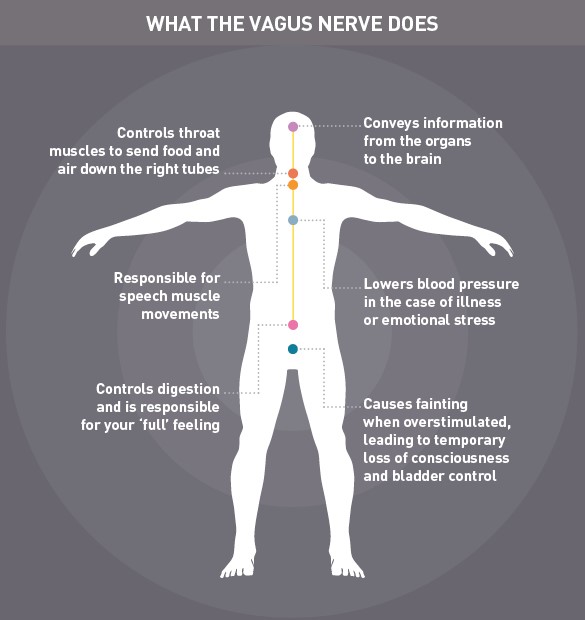Does thinking get in the way of performance:
An opportunity rather than a problem?
We have all heard athletes acknowledge overthinking in performance situations, whereby their actions change from the automatic nature of ‘see and do’ to, instead, awkward and poor timing. But, when thinking takes over a performer, this presents an opportunity rather than a problem.
Your Thinking is Not the Issue
The problem of overthinking is not a problem – it’s a cue and a solution. Thinking during performance is often an appropriate response that allows us to respond to the environment. Our brain is processing information as part of summarizing threats and non-threats, which is a primary role of the brain moment-to-moment. These moments are teaching us as performers that there is something to adjust, to learn, or to manage (Allen et al., 2013; Critchley et al., 2013; Porges, 2011).
Emotions are the biggest drivers of thinking and yet we often learn that thinking drives our emotions. This is a populous belief fueled by clichés and our unfortunate lack of literacy about the brain. We feel first, then think, so in moments when thinking arises in a disadvantageous way, it is a cue to observe and manage emotions. Thus, these moments act as cues about the neurophysiological processes with regard to breathing and heart rate (Homma & Masaoka, 2008; Wielgosz et al., 2016).
The Hijacking of Performance
Any performance can be hijacked or directed away from the desired course via emotion. Daniel Goleman coined the term ‘amygdala hijacking’ (1996) drawing on work of Joseph E. LeDoux (1995), and the term describes emotional responses that are immediate and overwhelming. This hijacking triggers some immediate changes like an increased heart rate, sweaty palms, more shallow/rapid breathing which causes us to intake more oxygen, and heightened ‘fight or flight response’ thinking (Goleman, 1996). This is an adaptive response as it reflects awareness and management of our evolutionary survival tools via the vagus nerve (Figure 1).

Figure 1. The vagus nerve is the longest nerve of the autonomic nervous system, which influences the function of internal organs. ( Image taken from Could tweaking a nerve beat obesity? )
The vagus nerve is constantly sending updated sensory information about the state of the body’s organs “upstream” to your brain via nerves (Porges, 2011). In fact, 80-90% of the nerve fibers in the vagus nerve are dedicated to communicating the state of affairs (emotional, contextual internal and external) up to your brain. Visceral feelings and gut instincts are literally emotional intuitions transferred up to your brain via the vagus nerve. The vagus nerve assists the brain and our emotional understanding, and efficiently has information travel from the gut to the brain to modulate mood states (Allen et al., 2013; Critchley et al., 2013; Porges, 2011). Our emotional abilities are needed to perform, and we can deliberately redirect or manage performance via breathing and returning to a more efficient performance scenario of ‘see and do’ (Gevirtz, 2013; Ginsberg et al., 2015; Lehrer & Gevirtz, 2014).
Emotions Run the Show
Our understanding of emotion – not unlike the brain – has often been clouded by myth, misconceptions, and cultural confounds. Although many dedicated researchers have put forth consistent and exemplary efforts to uncover truths about emotional states and the brain (Clore & Huntsinger, 2007; Kassam et al., 2013; Tooby & Cosmides, 2004), many of us have little day-to-day working knowledge with regard to emotional and/or brain health. The heart as the stomach is connected to the brain via the vagus nerve along with 40,000 sensory neurons relaying information to the brain – leading researchers call the heart ‘the little brain.’ The heart coordinates emotions and communications with the brain and the sub-systems of the body in four ways, including:
- nervous system connections from other systems (e.g., stomach, neuromuscular)
- hormones produced in the heart
- biomechanical information via blood pressure waves, and
- energetic information from the electrical responses in the heart itself (Porges, 2011)
The Performing Brain
The neurologic power of the brain and the connective power of the vagus nerve make it possible to ‘train’ the heart from acting in a frenzied and disordered manner during stress and anger, and to instead work in an optimal manner to manage emotions and create lessons of calmness, controlled energy, and focus (Dupee et al., 2016; Lehrer & Gevirtz, 2014; Paul & Garg, 2012; Pusenjak et al., 2015). The implications are clear: better brain management leads to better control of information-processing both internally (within the body) and externally (from the environment). This management of the brain in concert with the heart and gut leads to better emotion regulation, treatment of clinical disorders, optimization of work/sport performance, and development of strategies to maximize life satisfaction and achievement are profound. The training offers the ability to recreate coherent signaling and feedback loops of management and control (Badra et al., 2001; Bernston et al., 1997; Brown et al., 1993; Eckberg, 2003; Eckberg et al., 1985; Paul & Garg, 2012; Song & Lehrer, 2003; Strack, 2003)
Diaphragmatic breathing is the one of the key components to managing the vagus nerve that communicates between the brain-heart-stomach ‘highway’ (Bianchi et al., 1995; Russell, 2014; Wang et al., 2010). This deep breathing is marked by expansion of the abdomen rather than the chest when breathing, which calms the vagus nerve and thus communicates ‘calming signals’ to the brain. This type of breathing is taught to high-level performers as a way to quickly recover, improve execution, and condition responses under stress (e.g., talented and gifted vocalists and musicians; law enforcement/military personnel – such as those who require tactical breathing during shooting; and, elite athletes) (e.g., see Blumenstein & Orbach, 2014; Liu et al., 2014; Thompson et al., 2015; Wells et al., 2012).
The mechanics of diaphragmatic breathing have evolved and built upon neuroplasticity over time (Speck et al., 2015). Breathing from the lower abdomen is a key advantage as blood flow is greater in the lower part of the lungs (due simply to gravity). There are blood flow differences throughout our core with as much as twice the blood/air flow from the top of our chest to the bottom of our core. This is why diaphragmatic breathing can quickly change our response bringing richer oxygenation of blood to the brain and changing the process of stress, anxiety, and fight or flight responses (Kreibig, 2010; Widdicombe & Sterling, 1970). The entire functional system benefits from a simple change in breath rate. Slow diaphragmatic breathing changes and modifies CNS-cerebral messaging effectively (Figure 2).

Figure 2. The interaction of cognitive and emotional factors in the etiology of performance anxiety. The performance situation is interpreted in line with previous performance experience and cognitive factors, such as pressure to perform. Slow breathing intervention influences level of vagal tone, inhibiting immediate arousal and enhancing approach tendencies. These physiological factors feedback to cortical areas to influence further interpretation of the environment as either threatening or safe. Perceived safety determines behavior and interpretation of performance, which leads to either dysregulation and anxiety or successful regulation and coping behaviors. Level of anxious response determines future interpretations of performance environment. ( Wells et al., 2012; image adapted from: Matter Over Mind: A Randomised-Controlled Trial of Single-Session Biofeedback Training on Performance Anxiety and Heart Rate Variability in Musicians )
More specifically, this type of training can be further enhanced via biofeedback or heart rate variability biofeedback (HRVB) technology (Dupee et al., 2016; Lehrer & Gevirtz, 2014; Paul & Garg, 2012; Pusenjak et al., 2015). Unique from HRV measurement, HRVB training capitalizes on objective data and observable reactions of the user, and helps to focus and accelerate the positive effect of breath rate. Even more importantly, HRVB technology provides instant reinforcement toward moment-to-moment improvements. This aspect is critical to learning engagement, correcting the course of brain patterns, and creating lasting change.
The HRVB training consists of participants looking at their heart rate data during slow breathing, whereby they strive to maximize and create peaks and valleys. The heart rate pattern that occurs can be seen when heart rate increases during inhalation and decreases during exhalation. Patterns are measured using a noninvasive electrocardiogram (ECG/EKG) or a finger sensor that measures the blood volume pulse (BVP). The training focuses breathing at the pace of 4-7 breaths per minute. During slow breathing, heart rate and breathing rhythms synchronize – i.e., in a way that produces management of autonomic system response. The slow breathing pace which varies in individuals (for most, this is between 5.5 – 6 breaths per minute) can be determined using HRVB tracking tools. Over time, slow breathing exercises produce flexibility in the autonomic nervous system and mounting evidence points to the efficacy of HRVB for autonomically-mediated disorders and for stress, anxiety, depression, chronic pain, hypertension, and multiple performance aspects (related to energy management, movement/coordination, timing, decision-making, cardio/respiratory abilities, and VO2 max) (Choudhary et al., 2016; Dupee et al., 2016; Paul & Garg, 2012; Lehrer & Gevirtz, 2014; Pusenjak et al., 2015).
In summary, we can utilize deliberate action to redirect or manage performance via breath and return to the more efficient performance scenario of ‘see and do’. Thus, when returning to our initial question, “does thinking get in the way of performance?”, we can confidently affirm that ‘thinking’ presents an opportunity once we understand the interplay between our thoughts and emotions vis-à-vis our brains.
Please share this post so others may benefit.

Dr John P Sullivan is a Sport Scientist and Clinical Sport Psychologist with over twenty years of clinical and scholarly experience. He currently holds appointments within the National Football League (NFL), the English Premier League (EPL), the NCAA (Providence College, University of Rhode Island, Brown University), and the Military in the U.S. Dr. Sullivan is also a visiting scholar and applied sport scientist at the Queensland Academy of Sport and Queensland University of Technology in Brisbane, Australia. He is a frequent contributor writing on sport science and sports medicine and his latest efforts have focused on a series of books which distills the latest performance psychology, cognitive science, and neuroscience, related to optimal brain performance and health entitled The Brain Always Wins. Find out more about brain health and human performance in the book, The Brain Always Wins, available now on Amazon. Listen to the latest The Brain Always Wins podcasts and follow Dr. Sullivan on Twitter @BrainAlwaysWins
About Metrifit
Metrifit is an athlete monitoring system that gathers subjective and objective information from both coaches and athletes to drive behavior modification and improvement through insights modeled on descriptive and predictive analytics. It sounds complicated but Metrifit prides itself on its simple intuitive interface and advocates a simple effective approach that doesn’t overwhelm the athlete or the coaching/staff member. It has received high praise for its intuitive interface and it allows monitoring to be scaled for all levels of athletes and teams. Recent research by Anna Saw (Deakin University, Australia) has shown that use of Metrifit is associated with increased athlete sporting self-confidence. Metrifit is ‘athlete-centric’ helping to develop self-awareness, encourage creative thinking and emotional intelligence as well as developing ownership and responsibility within the athlete for their own success.
To find out more information please visit Metrifit Overview or contact us at
References
Allen, M., Smallwood, J., Christensen, J., Gramm, D., Rasmussen, B., Gaden Jensen, C., Roepstorff, A., & Lutz, A. (2013). The balanced mind: The variability of task-unrelated thoughts predicts error-monitoring. Frontiers in Human Neuroscience, 7, 743.
Badra L. J., Cooke W. H., Hoag J. B., Crossman A. A., Kuusela T. A., Tahvanainen K. U., & Eckberg, D. L. (2001). Respiratory modulation of human autonomic rhythms. The American Journal of Physiology – Heart and Circulatory Physiology, 280, H2674–H2688.
Berntson G. G., Bigger J. T., Jr., Eckberg D. L., Grossman P., Kaufmann P. G., Malik M., Nagaraja, H. N., Porges, S. W., Saul, J. P., Stone, P. H., & van der Molen, M. W. (1997). Heart rate variability: Origins, methods, and interpretive caveats. Psychophysiology, 34, 623–648.
Bianchi, A. L., Denavit-Saubie, M., & Champagnat, J. (1995). Central control of breathing in mammals: neuronal circuitry, membrane properties, and neurotransmitters. Physiological Reviews, 75(1), 1-46.
Blumenstein, B., & Orbach, I. (2014). Biofeedback for sport and performance enhancement. Oxford University Press. DOI: 10.1093/oxfordhb/9780199935291.013.001
Brown T. E., Beightol L. A., Koh J., & Eckberg D. L. (1993). Important influence of respiration on human R-R interval power spectra is largely ignored. Journal of Applied Physiology, 75, 2310–2317.
Choudhary, R., Trivedi, V., & Choudhary, S. G. (2016). Effect of heart rate variability biofeedback training on the performance of track athlete. International Journal of Therapies and Rehabilitation Research, 5(4), 166-174.
Clore G., & Huntsinger, J. (2007). How emotions inform judgment and regulate thought. Trends in Cognitive Sciences, 11(9), 393–399.
Critchley, H. D., Eccles, J., & Garfinkel, S. N. (2013). Interaction between cognition, emotion, and the autonomic nervous system. Handbook of Clinical Neurology, 117, 59-77.
Dupee, M., Forneris, T., & Werthner, P. (2016). Perceived outcomes of a biofeedback and neurofeedback training intervention for optimal performance: Learning to enhance self-awareness and self-regulation with Olympic athletes. The Sport Psychologist, 30(4), 339-349.
Eckberg, D. L. (2003). The human respiratory gate. The Journal of Physiology, 548(Pt. 2), 339–352.
Eckberg, D. L., Nerhed, C., & Wallin, B. G. (1985). Respiratory modulation of muscle sympathetic and vagal cardiac outflow in man. The Journal of Physiology, 365, 181–196.
Gevirtz, R. (2013). The promise of heart rate variability biofeedback: Evidence-based applications. Biofeedback, 41, 110–120.
Ginsberg, J. P., Pietrabissa, G., Manzoni, G. M., & Castelnuovo, G. (2015). Treating the mind to improve the heart: The summon to cardiac psychology. Frontiers in Psychology, 6, 1101.
Goleman, D. (1996). Emotional intelligence. Why it can matter more than IQ. Learning, 24(6), 49-50.
Homma, I., & Masaoka, Y. (2008). Breathing rhythms and emotions. Experimental Physiology, 93(9), 1011-1021.
Kassam, K. S., Markey, A. R., Cherkassky, V. L., Loewenstein, G., & Just, M. A. (2013). Identifying emotions on the basis of neural activation. PLoS ONE, 8(6): e66032. doi:10.1371/journal.pone.0066032
Kreibig, S. D. (2010). Autonomic nervous system activity in emotion: A review. Biological Psychology, 84(3), 394-421.
LeDoux J. E. (1995). Emotion: Clues from the brain. Annual Review of Psychology, 46, 209-235.
Lehrer, P. M., & Gevirtz, R. (2014). Heart rate variability biofeedback: How and why does it work? Frontiers in Psychology, 5, 756.
Liu, Q., Song, H., Du, Y., Cao, Z., Zhou, Y., Peng, F., Yang, L., & Luo, Y. (2014). Effect of deep-breath biofeedback on heart rate variability and blood pressure at high altitude. In Proceedings of the 13th International Conference on Man-Machine-Environment System Engineering (pp. 387-393). Springer Berlin Heidelberg.
Paul, M., & Garg, K. (2012). The effect of heart rate variability biofeedback on performance psychology of basketball players. Applied Psychophysiology and Biofeedback, 37(2), 131–144.
Porges, S. (2011). The Polyvagal Theory. New York: W. W. Norton & Company.
Pusenjak, N., Grad, A., Tusak, M., Leskovsek, M., & Schwarzlin, R. (2015). Can biofeedback training of psychophysiological responses enhance athletes’ sport performance? A practitioner’s perspective. The Physician and Sportsmedicine, 43(3), 287-299.
Russell, M. (2014). Diaphragmatic breathing and its effect on inhibitory control (Master’s thesis). Retrieved from UKnowledge, University of Kentucky). Theses and Dissertations-Psychology. Paper 53. http://uknowledge.uky.edu/psychology_etds/53
Speck, D. F., Dekin, M. S., Revelette, W. R., & Frazier, D. A. (2015). Respiratory control: Central and peripheral mechanisms. Lexington: The University Press of Kentucky. Retrieved February 9, 2017, from Project MUSE database.
Song, H. S., & Lehrer, P. M. (2003). The effects of specific respiratory rates on heart rate and heart rate variability. Applied Psychophysiology and Biofeedback, 28(1), 13–24.
Strack, B. W. (2003). Effect of heart rate variability (hrv) biofeedback on batting performance in baseball. Dissertation Abstracts International: Section B: The Sciences and Engineering, 64, 1540.
Thompson, A. G., Swain, D. P., Branch, J. D., Spina, R. J., & Grieco, C. R. (2015). Autonomic response to tactical pistol performance measured by heart rate variability. The Journal of Strength & Conditioning Research, 29(4), 926-933.
Tooby, J., & Cosmides, L. (2004). The evolutionary psychology of the emotions and their relationship to internal regulatory variables. In M. Lewis, J. M. Haviland-Jones, & L. F. Barrett (Eds.), Handbook of Emotions, 3rd Ed. (pp. 114-137). NY: Guilford Press.
Wang, S. Z., Li, S., Xu, X. Y., Lin, G. P., Shao, L., Zhao, Y., & Wang, T. H. (2010). Effect of slow abdominal breathing combined with biofeedback on blood pressure and heart rate variability in prehypertension. The Journal of Alternative and Complementary Medicine, 16(10), 1039-1045.
Wells, R., Outhred, T., Heathers, J. A., Quintana, D. S., & Kemp, A. H. (2012). Matter over mind: A randomised-controlled trial of single-session biofeedback training on performance anxiety and heart rate variability in musicians. PloS ONE, 7(10), e46597. doi: 10.1371/journal.pone.0046597
Widdicombe, J. G., & Sterling, G. M. (1970). The autonomic nervous system and breathing. Archives of Internal Medicine, 126(2), 311-329.
Wielgosz, J., Schuyler, B. S., Lutz, A., & Davidson, R. J. (2016). Long-term mindfulness training is associated with reliable differences in resting respiration rate. Scientific Reports, 6, 27533. Wielgosz, J., Schuyler, B. S., Lutz, A., & Davidson, R. J. (2016). Long-term mindfulness training is associated with reliable differences in resting respiration rate. Scientific Reports, 6, 27533. doi.org/10.1038/srep27533
































 Previous Post
Previous Post Next Post
Next Post





